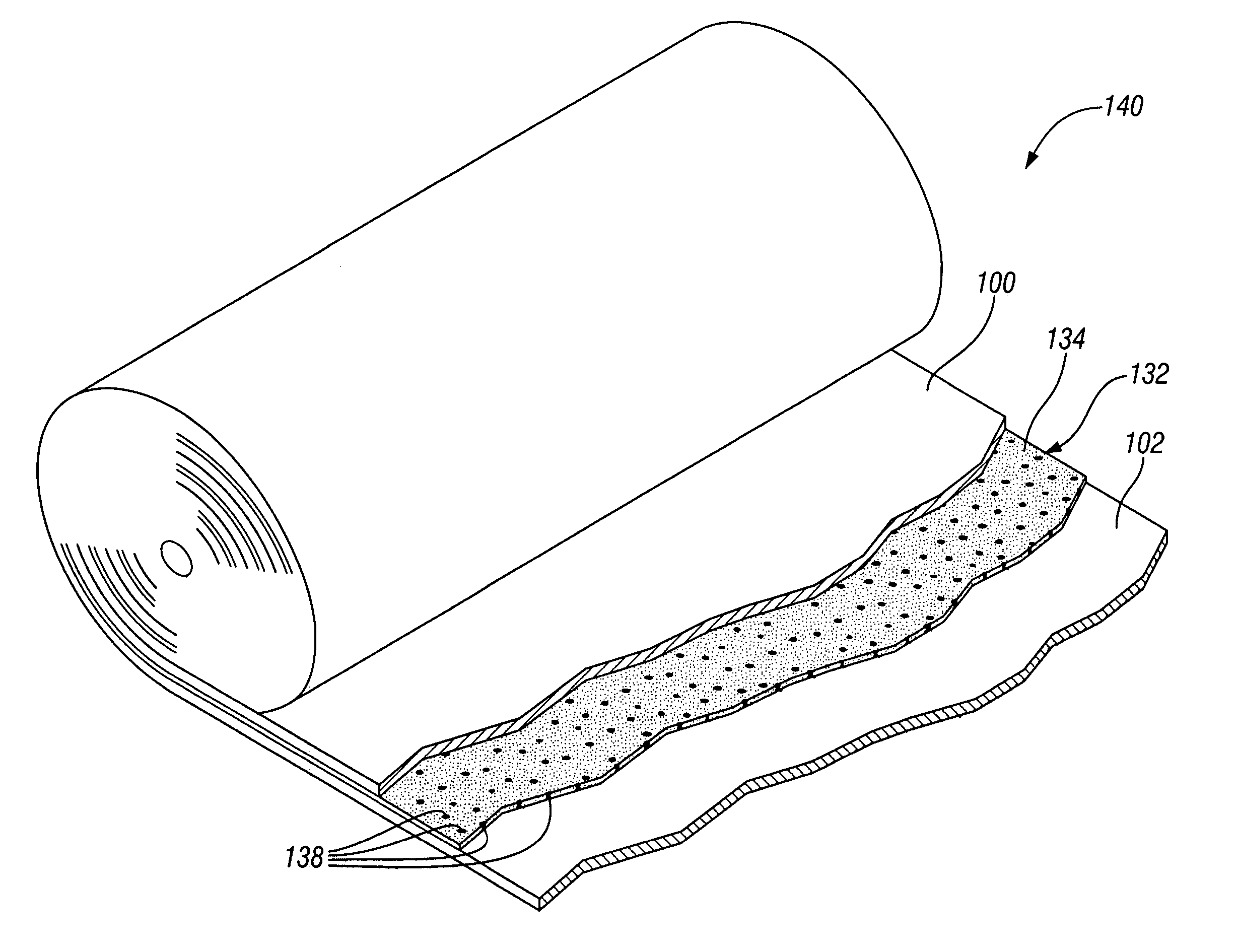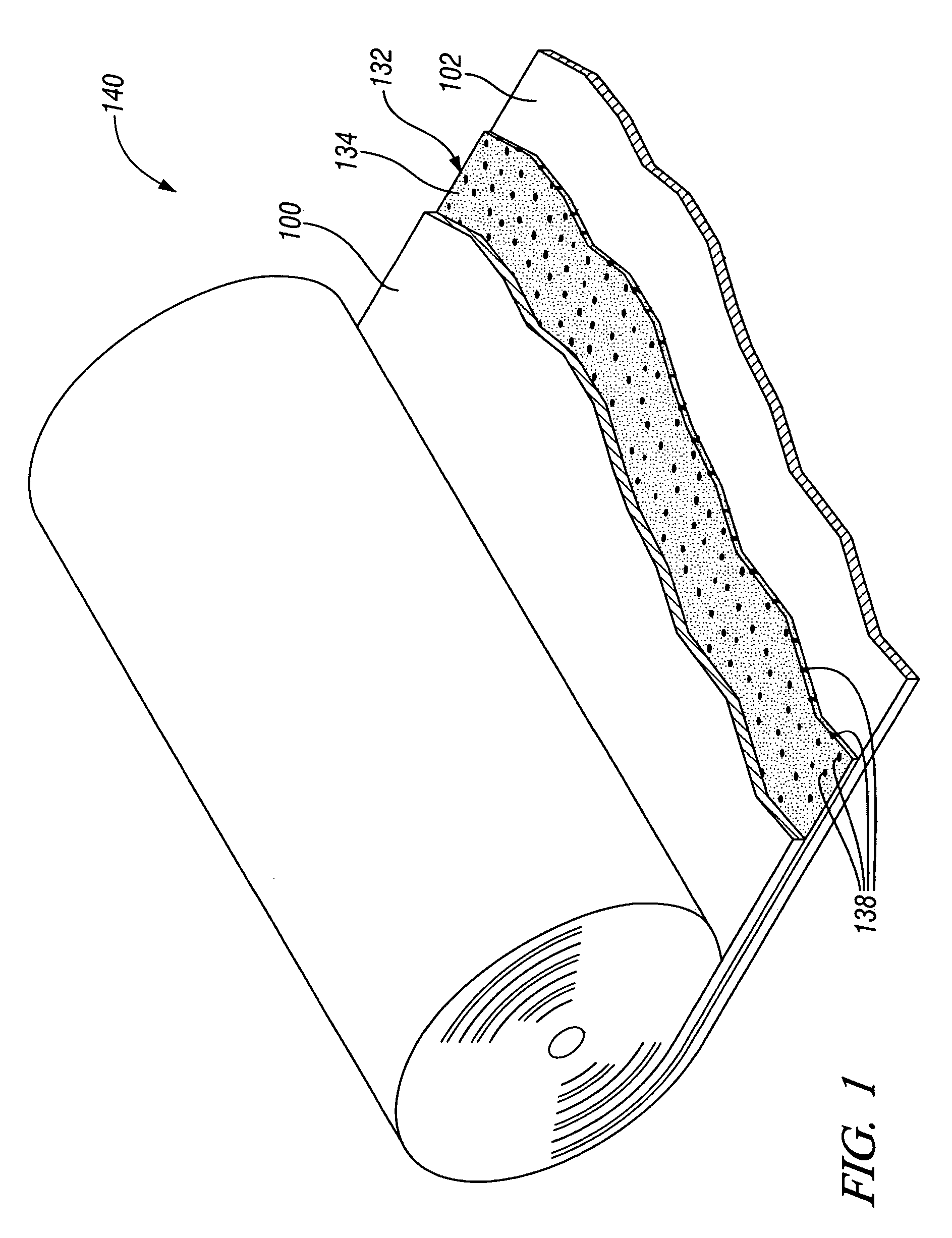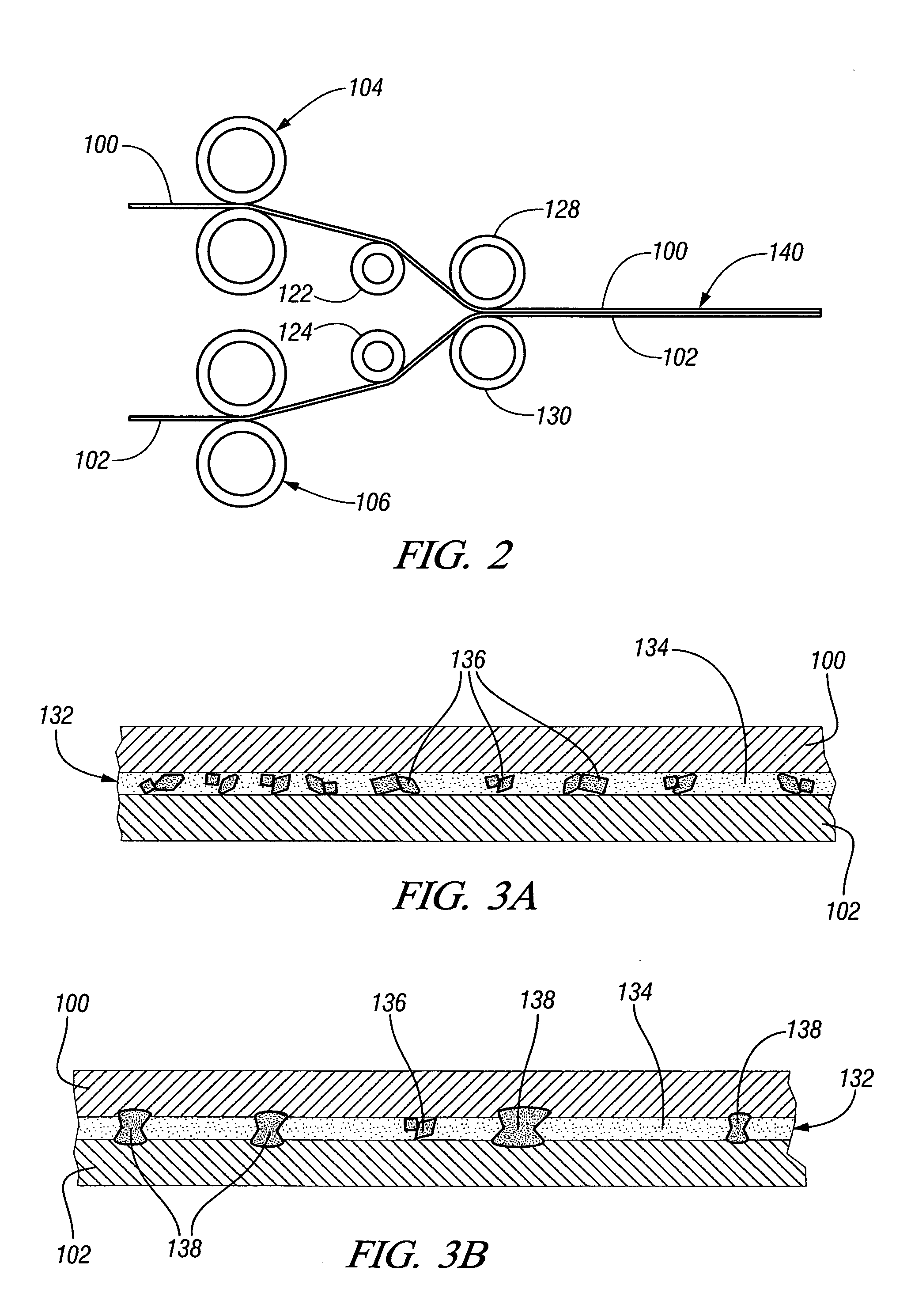Bonded lightweight structural sheet
a technology of lightweight structural sheets and bonded sheets, which is applied in the direction of water-setting substance layered products, transportation and packaging, and other domestic articles, can solve the problems of reducing the electrical resistance inherent in the adhesive bond, and reducing the electrical resistance of the adhesive bond
- Summary
- Abstract
- Description
- Claims
- Application Information
AI Technical Summary
Benefits of technology
Problems solved by technology
Method used
Image
Examples
Embodiment Construction
[0018]FIG. 1 illustrates a first embodiment of the invention in which uniformly-sized electrically conductive particles are used to form many columnar mechanical links between metal sheets in a three layer, sound deadening laminate of sheet metal, viscoelastic polymer adhesive, and sheet metal.
[0019]FIG. 1 shows a partly unwound coil of a sound-deadening, laminated sheet metal material 140. The laminate material 140 comprises two facing metal sheets 100 and 102 that are bonded together by an interfacial core layer 132. Core layer 132 includes a suitable viscoelastic polymeric adhesive material 134 that separates and adhesively bonds to facing surfaces of metal sheets 100, 102. Core layer 132 also includes many small diameter particulate bonding elements 138 distributed generally uniformly in the surrounding adhesive material 134 and that span the thickness of the viscoelastic core layer 132. During the fabrication of the laminate material 140, opposing sides of the particulate bond...
PUM
| Property | Measurement | Unit |
|---|---|---|
| thickness | aaaaa | aaaaa |
| thickness | aaaaa | aaaaa |
| vibration damping | aaaaa | aaaaa |
Abstract
Description
Claims
Application Information
 Login to View More
Login to View More - R&D
- Intellectual Property
- Life Sciences
- Materials
- Tech Scout
- Unparalleled Data Quality
- Higher Quality Content
- 60% Fewer Hallucinations
Browse by: Latest US Patents, China's latest patents, Technical Efficacy Thesaurus, Application Domain, Technology Topic, Popular Technical Reports.
© 2025 PatSnap. All rights reserved.Legal|Privacy policy|Modern Slavery Act Transparency Statement|Sitemap|About US| Contact US: help@patsnap.com



